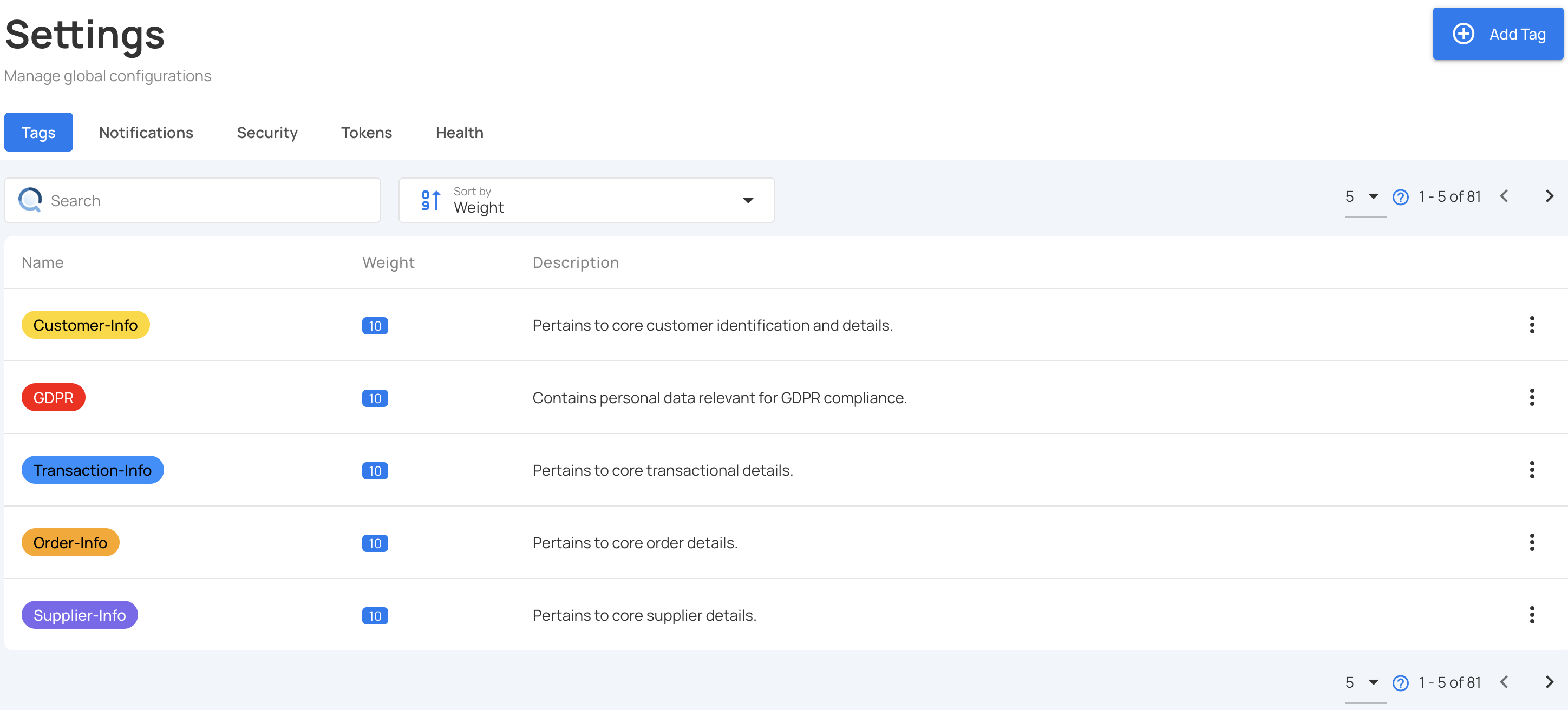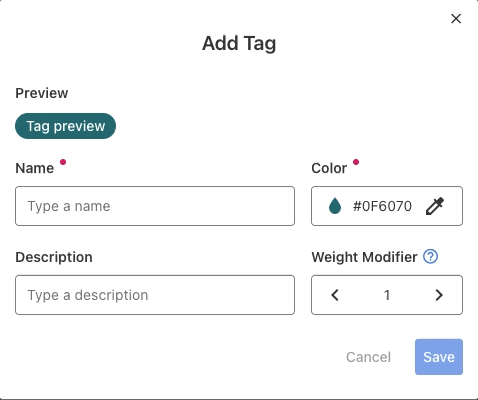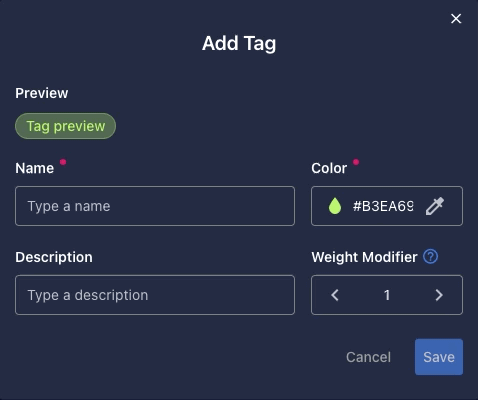Overview
Tagsin our system allow users to categorize and organize entities effectively, while also providing the ability to assign weights for prioritization. They can drive notifications and downstream workflows, and users can configure tags, associate notifications based onTags, and associate tags to specific properties.
Key Points
- Versatile Labeling
Tagscan be applied toDatastores,Profiles,Fields,Check's, and/orAnomalies.
- Notification and Workflow Integration
Tagsare utilized to drive notifications and downstream workflows, enabling users to stay informed and take appropriate actions.
- Weight Assignment
- Users can assign weights to
Tags, allowing for prioritization and emphasis on specificTags.
- Users can assign weights to
- Property Association
Tagscan be associated with specific properties, allowing for targeted actions and efficient management of entities across multiple datastores.
View Tags
- Find the
Tagsection by clicking onSettingsin the menu bar:


Tagsis now the default tab:


- View all the active
Tagsor clickAdd Tagin the upper right corner:


Add a Tag
- To add a
Tag, start with navigating to the top right and find theAdd Tagbutton.


- Clicking on the
Addbutton will pop up a modal:


- Details:
NameyourTag- Select a
Color:- Click into Hexadecimal number or select by clicking on the dropper to open a color picker
- Enter a description, if desired
- Select a
Weight- The weight value directly correlates with the level of importance, where a higher weight indicates higher significance.
- Ranges from -10 to 10
Applying a Tag
- Once a
Tagis created, it's ready to be associated with aDatastore,Profile,Check,Notificationand ultimately anAnomaly.
Tag Inheritance
- When a
Tagis applied to a data asset, all the descendents of that data asset also receive theTag.- For example, if a
Tagnamed Critical is applied to a Datastore then all the Tables, Fields, and Checks under that Datastore also receive theTag.
- For example, if a
-
Likewise, if the Critical
Tagis subsequently removed from one of the Tables in that Datastore, then all the Fields and Checks belonging to that Table will have the CriticalTagremoved as well. -
When a new data asset is created, it inherits the
Tagsfrom the owning data asset. For example, if a user creates a new Computed Table, it inherits all theTagsthat are applied to the Datastore in which it is created.
Tagging Anomales
- Anomalies also inherit
Tagsat the time they are created. They inherit all theTagsof all the associated failed checks. - However, anomalies are treated as metadata, not as data assets, for the purposes of tagging.
- Thus Anomalies do not inherit subsequent tag changes from those checks. They only inherit checks one time - at creation time.
Tagscan be directly applied to or removed from Anomalies at any time after creation.
Last update:
April 27, 2024